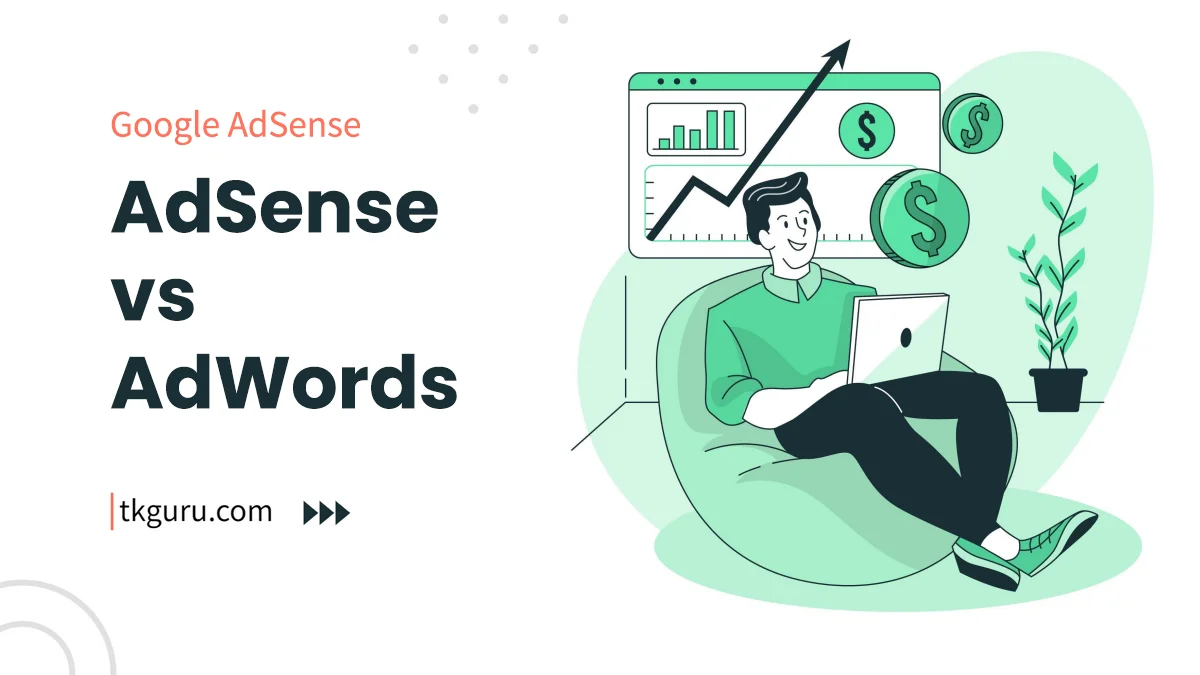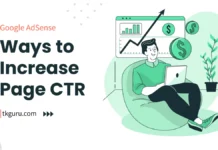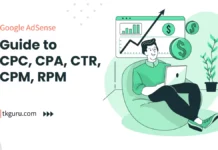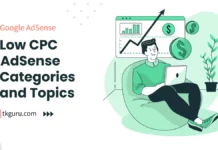Advertisements
Ratings

AdSense vs AdWords – In the vast realm of digital advertising, two platforms stand out as cornerstones of Google’s advertising ecosystem: Google AdSense and Google AdWords, now known as Google Ads.
These platforms serve distinct roles in the advertising landscape, catering to both publishers seeking monetization and businesses aiming to promote their products or services.
This guide aims to illuminate the differences between AdSense and Google Ads, shedding light on their functions, objectives, and how they contribute to the dynamic world of online advertising.
Contents
- 1. Google AdSense: Monetizing Publishers
- 2. Google AdWords (Now Google Ads): Advertisers’ Platform
- 3. AdSense vs AdWords: Key Differences
- 4. Revenue Model: Publishers vs Advertisers
- 5. Targeting and Display
- 6. Ad Formats and Creative
- 7. Performance Measurement and Analytics
- 8. User Experience and Integration
- Conclusion
- AdSense vs AdWords FAQs
1. Google AdSense: Monetizing Publishers
Google AdSense is a platform tailored for website owners and publishers who wish to monetize their digital properties.
It empowers publishers to display relevant ads on their websites, generating revenue through user interactions with those ads.
The integration process is seamless, ensuring a harmonious user experience while enabling publishers to earn passive income.
Key Features of Google AdSense:
| Feature | Description |
|---|---|
| Monetization Opportunity | Publishers can earn revenue by displaying ads. |
| Contextual Targeting | Ads are matched to the content of the website. |
| Easy Integration | Ad formats blend seamlessly with site design. |
Table 1: Key Features of Google AdSense
AdSense offers publishers an avenue to earn revenue without compromising the quality of their content or user experience.
2. Google AdWords (Now Google Ads): Advertisers’ Platform
Google AdWords, now known as Google Ads, is designed to cater to businesses seeking to promote their products or services through targeted advertising.
Advertisers create campaigns with specific goals, such as driving website traffic, generating leads, or increasing brand visibility.
Google Ads allows advertisers to choose where their ads appear, define their target audience, and set a budget for their campaigns.
Key Features of Google Ads:
| Feature | Description |
|---|---|
| Targeted Reach | Advertisers can reach their desired audience. |
| Various Ad Formats | Google Ads supports search, display, and video ads. |
| Cost-Effective | Advertisers pay for clicks (CPC) or impressions (CPM). |
Table 2: Key Features of Google Ads
Google Ads empowers businesses to strategically place their offerings in front of their target audience, ensuring efficient use of their advertising budget.
3. AdSense vs AdWords: Key Differences
While both AdSense and Google Ads are part of the same ecosystem, they serve distinct roles.
AdSense revolves around monetizing publishers’ websites by displaying ads, while Google Ads enables advertisers to create and display ads across Google’s network.
Key Differences Between AdSense and Google Ads:
| Aspect | AdSense | Google Ads |
|---|---|---|
| Primary Objective | Monetizing publishers’ websites. | Advertising products or services. |
| Revenue Flow | Publishers earn revenue from ad interactions. | Advertisers pay for ad placements. |
| User Interaction | Users click or view ads on publishers’ sites. | Users click on ads to access advertisers’ sites. |
| Targeting and Display | Contextual targeting on publishers’ sites. | Targeted audience selection for ad placements. |
| User Experience | Integration maintains user experience. | Ads appear on search results or partner sites. |
Table 3: Key Differences Between AdSense and Google Ads
The distinct goals and revenue models of AdSense and Google Ads dictate their unique roles within the digital advertising ecosystem.
4. Revenue Model: Publishers vs Advertisers
AdSense and Google Ads have different revenue models that cater to publishers and advertisers, respectively.
Publishers participating in AdSense earn revenue based on user interactions with ads displayed on their websites. This can include clicks on ads or impressions (the number of times ads are viewed).
On the other hand, Google Ads operates on a pay-per-click (CPC) or cost-per-impression (CPM) model.
Advertisers bid on keywords or ad placements, and they pay Google only when users click on their ads or when their ads are shown a certain number of times (impressions).
Revenue Models for Publishers and Advertisers:
| Revenue Model | AdSense | Google Ads |
|---|---|---|
| Publishers | Earn revenue from clicks or impressions. | N/A |
| Advertisers | Pay for clicks (CPC) or impressions (CPM). | Pay for clicks (CPC) or impressions (CPM). |
Table 4: Revenue Models for Publishers and Advertisers
The revenue flow varies between the two platforms, reflecting their distinct roles in the advertising ecosystem.
5. Targeting and Display
AdSense and Google Ads employ different approaches to targeting and displaying ads. AdSense utilizes contextual targeting, where ads are matched to the content of the publishers’ websites.
This ensures that the ads displayed are relevant to the user’s current browsing context.
On the other hand, Google Ads offers advertisers advanced targeting options. Advertisers can choose keywords, demographics, interests, and even specific websites where they want their ads to appear. This granular targeting allows businesses to reach their intended audience effectively.
Targeting Approaches of AdSense and Google Ads:
| Targeting Approach | AdSense | Google Ads |
|---|---|---|
| AdSense | Contextual targeting based on site content. | N/A |
| Google Ads | Advanced targeting using keywords, demographics, etc. | Precise audience selection for ad placements. |
Table 5: Targeting Approaches of AdSense and Google Ads
The distinction in targeting approaches caters to publishers seeking seamless integration and advertisers aiming for precise audience reach.
6. Ad Formats and Creative
Both AdSense and Google Ads offer a variety of ad formats to suit different needs. AdSense supports formats such as text ads, display ads, and native ads.
These formats are seamlessly integrated into publishers’ websites, maintaining user experience while generating revenue.
Google Ads, on the other hand, offers a wider range of ad formats, including search ads, display ads, video ads, shopping ads, and app promotion ads. Advertisers can choose the format that best aligns with their goals and creative assets.
Ad Formats Offered by AdSense and Google Ads:
| Ad Formats | AdSense | Google Ads |
|---|---|---|
| AdSense | Text ads, display ads, native ads. | N/A |
| Google Ads | Search ads, display ads, video ads, shopping ads, app promotion ads, etc. | Various formats catered to advertisers’ needs. |
Table 6: Ad Formats Offered by AdSense and Google Ads
The array of ad formats caters to both publishers aiming for seamless integration and advertisers seeking engaging ad placements.
7. Performance Measurement and Analytics
Both AdSense and Google Ads offer analytics tools for users to monitor the performance of their ads.
AdSense provides publishers with metrics like click-through rate (CTR), ad impressions, and earnings reports.
This information helps publishers understand how well their ads are performing and optimize their content accordingly.
Google Ads, on the other hand, provides advertisers with comprehensive analytics that encompass ad performance, conversion tracking, return on investment (ROI), and more.
This data allows advertisers to assess the effectiveness of their campaigns and make data-driven decisions.
Performance Metrics and Analytics:
| Metrics and Analytics | AdSense | Google Ads |
|---|---|---|
| AdSense | CTR, ad impressions, earnings reports. | N/A |
| Google Ads | Ad performance, conversions, ROI, analytics dashboard. | In-depth data for campaign assessment and optimization. |
Table 7: Performance Metrics and Analytics
The available metrics and analytics empower both publishers and advertisers to measure and optimize their ad strategies effectively.
8. User Experience and Integration
A crucial aspect of both AdSense and Google Ads is the impact on user experience. AdSense focuses on seamlessly integrating ads into publishers’ websites to maintain a cohesive browsing experience.
The ads are designed to blend with the website’s design and content, ensuring that they don’t disrupt the user’s engagement.
Google Ads, on the other hand, places ads in different locations such as search results or partner websites.
While these placements are carefully chosen to provide relevant information to users, they can alter the user experience by presenting ads in various formats.
User Experience Considerations:
| Aspect | AdSense | Google Ads |
|---|---|---|
| Ad Integration | Seamless integration within publishers’ sites. | Ads displayed in search results or partner sites. |
| User Engagement | Minimal disruption to user engagement. | Ads can alter user experience on search or partner sites. |
Table 8: User Experience Considerations
Balancing ad integration with user experience is essential for both platforms to ensure that users remain engaged while interacting with ads.
Conclusion
In the realm of digital advertising, Google AdSense and Google Ads play distinct yet complementary roles.
AdSense empowers publishers to monetize their websites by seamlessly integrating ads into their content, ensuring a passive revenue stream while preserving user experience.
Google Ads caters to businesses seeking to promote their offerings through various ad formats, enabling precise audience targeting and measurable ROI.
Understanding the differences between AdSense and Google Ads is essential for publishers and advertisers alike.
While AdSense provides an avenue for publishers to monetize their digital properties, Google Ads offers advertisers a powerful platform to reach their target audience effectively.
By appreciating the distinct functions of these platforms, publishers can optimize their monetization strategies, and advertisers can create impactful campaigns that resonate with their audience.
Whether you’re a publisher looking to generate revenue or an advertiser aiming to increase visibility, the Google advertising ecosystem offers tools tailored to your goals.
In a rapidly evolving digital landscape, the synergy between AdSense and Google Ads contributes to the diversity and effectiveness of online advertising.
As you navigate these platforms, understanding their roles, revenue models, and features will empower you to make informed decisions that align with your objectives.
AdSense vs AdWords FAQs
What is the difference between AdSense and AdWords?
AdSense and AdWords are both Google advertising platforms, but they serve different purposes:
- AdSense: Allows website owners to display Google ads on their sites and earn revenue when users interact with the ads.
- AdWords (now known as Google Ads): Enables advertisers to create and manage paid advertising campaigns to display ads on Google's search results and partner websites.
Who uses AdSense and who uses AdWords?
Website owners and publishers use AdSense to monetize their online content by displaying relevant ads.
Advertisers and businesses use AdWords (Google Ads) to create and run paid advertising campaigns to reach their target audience.
Can I use both AdSense and AdWords simultaneously?
Yes, you can use both platforms simultaneously. Publishers can display AdSense ads on their websites while advertisers use AdWords (Google Ads) to run paid campaigns.
How does AdSense generate revenue for website owners?
AdSense revenue is generated when visitors interact with the displayed ads on a publisher's website.
Revenue can be earned through clicks (CPC) or impressions (CPM), depending on the ad format and the type of interaction.
Which platform is more suitable for businesses looking to advertise their products or services?
Businesses looking to advertise their products or services should use Google Ads (formerly AdWords).
Google Ads allows advertisers to target specific demographics, keywords, locations, and devices, providing more control over their campaigns.
While both AdSense and AdWords are part of Google's advertising ecosystem, they cater to different audiences and purposes.
AdSense is for publishers seeking to monetize their websites, while AdWords (Google Ads) is for businesses looking to run paid advertising campaigns to promote their offerings.
| Web Hosting | Website |
| WordPress | Google Adsense |
| SEO | Affiliate Marketing |
| Blogging | YouTube |
Recent Posts
- 9 Proven Ways to Increase Page CTR by 50%
- 9 Proven Ways to Increase Page RPM by 50%
- A Detailed Guide to CPC, CPA, CTR, CPM, RPM
- Top 10 High CPC Countries: Maximizing Ad Revenue in Lucrative Markets
Related Tags
google adsense, adsense vs adwords vs admob, difference between google ads and google adwords, google ads and google adsense difference, adsense vs admob, difference between adwords and adsense in hindi, google adsense vs ezoic, can i use adwords and adsense together?






